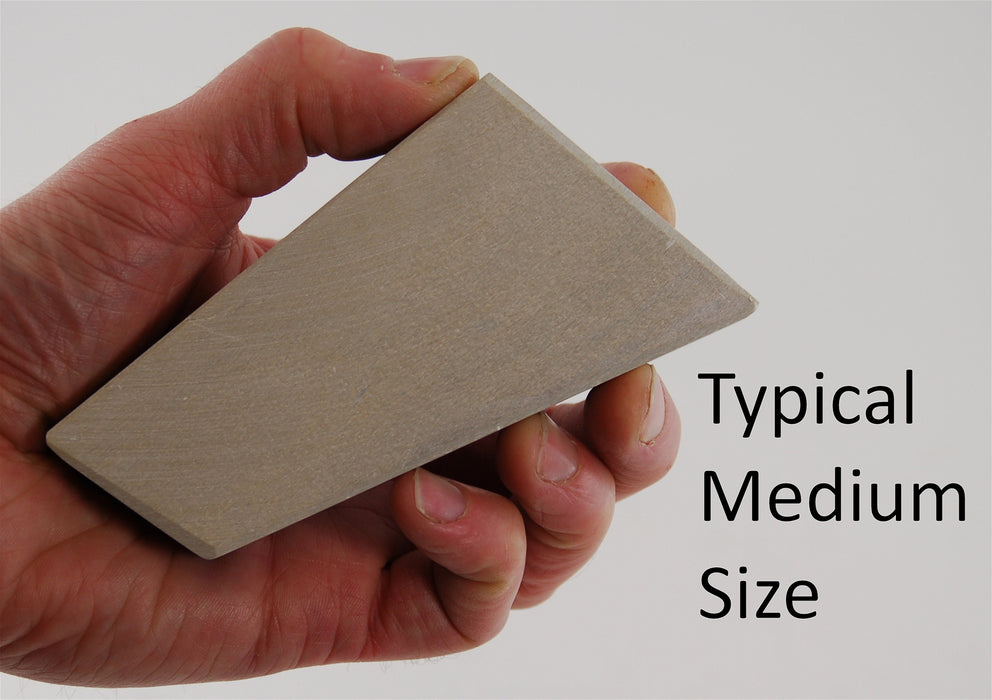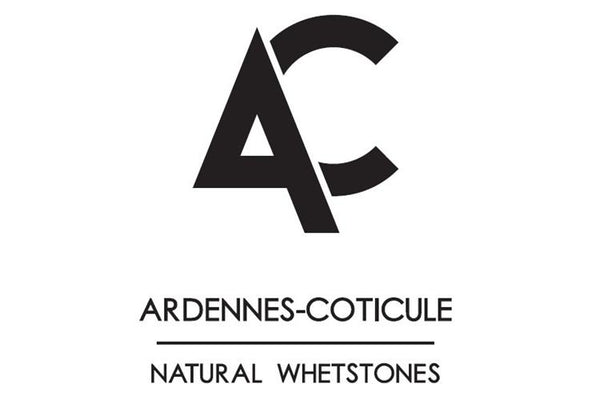
Perfect for Small Blades
The unique shapes of the Random Shaped Coticules are great for sharpening edges on a wide variety of small blades such as pocket knives, carving knives, carving gouges and v-tools or engraving tools, even straight razors. These unique stones can be a beautiful and useful addition to your sharpening tool kit.
Unique Shapes
Coticules are natural stones. Raw rocks are quarried, then shaped and finished by hand to make usable whetstones. Typically, the quarried rocks are formed into rectangles of standard sizes, however there are always some pieces of raw stone that won't fit into those standard rectangles, but which will make perfectly good whetstones. These oddly shaped stones have their surfaces flattened and their sides evened out in whatever shapes present themselves.
Two Sizes
The exact shapes and sizes of each stone vary, but they are sorted into two groups:
- Small - These stones have a sharpening surface of approximately 4 to 5 square inches
- Medium - These stones have a sharpening surface of approximately 7.5 to 9 square inches
Coticule Stones
The Random Shape Coticule Whetstones are the same composition as the rectangular Coticule Whestones we offer. Like the rectangular Coticules, the Random Shaped Whetstones are fixed to a backing of blue-gray slate for stability. Coticules are somewhat brittle, and the slate backing prevents breakage. The slate is intended for structure only and is not used in the sharpening process.
Note that all Coticules are hand shaped, natural stones. The presence of hairline fractures is normal and not considered a defect. Some variance of size, color and exact composition is also normal.
A Unique Sharpening Experience
If you are used to using modern synthetic or even natural Arkansas stones, you will find sharpening with a Coticule to be a bit different, but very satisfying.
Single Stone Sharpening
While they are often compared to Japanese water stones of 8,000 to 10,000 grit, Coticules can actually be used as if they were multiple stones of varying grit. Altering the amounts of water and pressure used while sharpening will make the stone more or less aggressive.
Coarser sharpening is achieved by using less water and greater pressure. The garnets in the stone break free and create a slurry when used in this fashion. In the slurry created on a Coticule, the hard garnet particles are able to abrade more deeply as they roll freely on the surface of the stone, resulting in a more aggressive action that will leave a cloudy finish on the metal.
You can achieve an even finer sharpening by reducing the thickness of the slurry and by gradually adding more water and reducing the amount of pressure used. Eventually, the slurry is thinned to the point where only water will be present on the surface of the stone. With fewer garnets rolling freely on the surface of the stone, the individual particles cannot bite as deeply. At this point, using almost no downward pressure on the edge against the stone, the result is a mirror-fine finish on the metal.
Coticule Stones are related to and found alongside Belgian Blue Whetstones. While both types are often used as stand alone sharpening stones, the BBW's are sometimes used for initial coarser sharpening before finishing with a Coticule.
Use With Water
Coticule Stones should only be used with water, never oil. They are non-porous and do not absorb liquid or clog with swarf, so there is no need to soak them prior to sharpening.
Ardennes-Coticule Coticule Random Shape Whetstone
- Natural Whetstones
- Random, Non-Rectangular Shapes
- Small or Medium Sizes
- Use With Water



